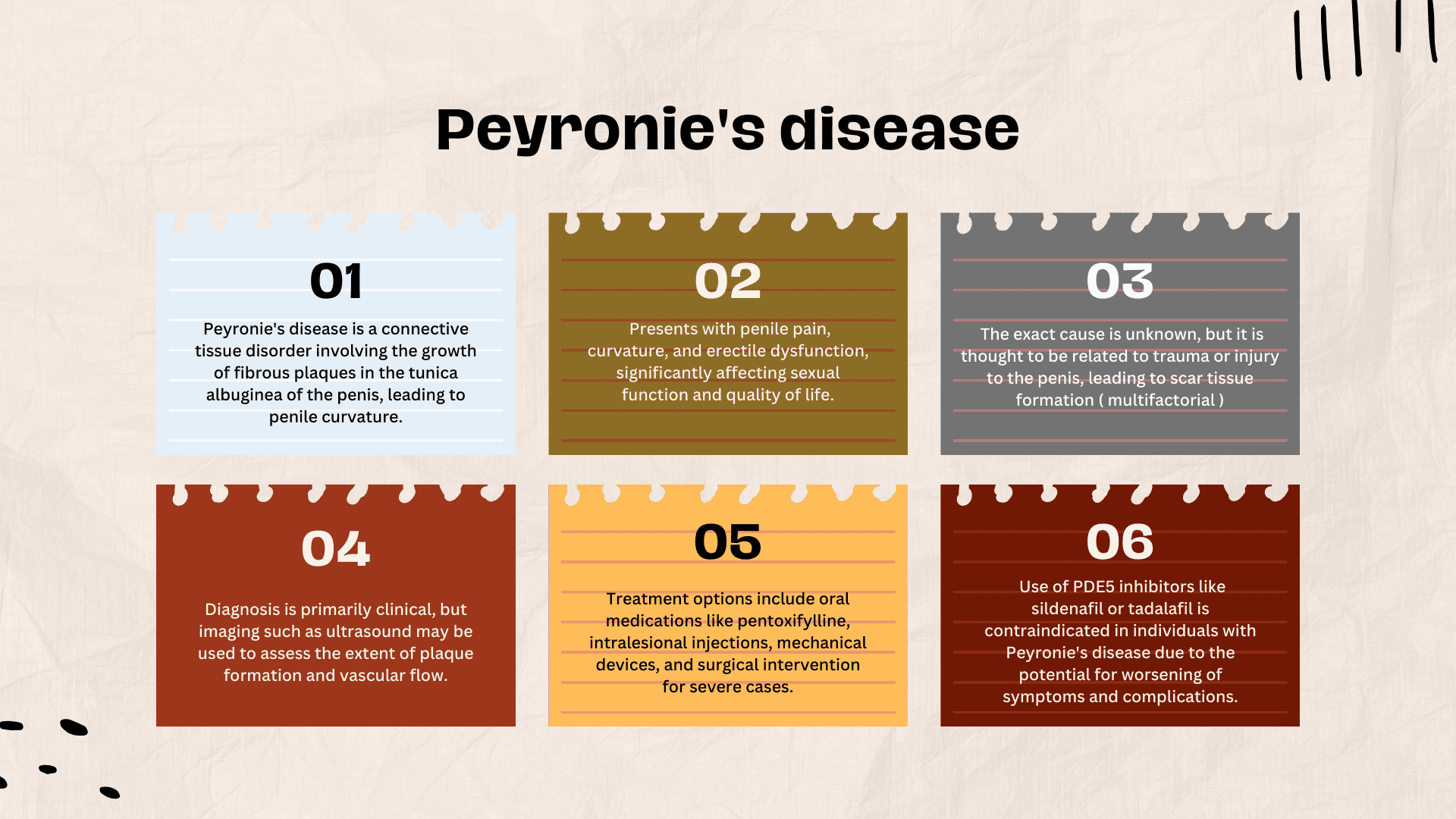Download A4Medicine Mobile App
Empower Your RCGP AKT Journey: Master the MCQs with Us!

This table presents the prevalence information, elaborates on the evaluation process, and provides a comprehensive overview of Peyronie's Disease.
| Aspect of Peyronie's Disease | Description |
|---|---|
| Definition | Fibromatous disorder of the tunica albuginea of the penile corpus cavernosum. |
| Characteristics | Pain, plaque formation, penile curvature, and plaque calcification. |
| Prevalence and Impact | Inconsistent epidemiological data; recent reports suggest a prevalence of up to 13.1%. Affects men of all ages, with potential impacts on sexual function and psychosocial well-being. |
| Genetics | Genetics may play a role, with chromosomal abnormalities and single-nucleotide polymorphisms associated with fibrotic diatheses. |
| Pathophysiology | Tunical mechanical stress and microvascular trauma contribute to the development of PD. |
| Diagnosis | Combination of clinical history, physical examination, and, if necessary, imaging modalities. Lab testing is generally not required. |
| Evaluation | Obtaining a detailed history and performing a thorough physical exam is crucial for diagnosis and treatment planning. Key evaluation points include: 1. Onset and Progression: Determine if the patient is in the acute or chronic phase. 2. Deformity: Assess the direction and degree of curvature, presence of hourglass deformity, hinge effect, or other abnormalities. 3. Erection: Evaluate the degree of rigidity, ability to sustain and maintain an erection, and presence of nocturnal erections. 4. Pain... |
Try our Free Plan to get the full article.